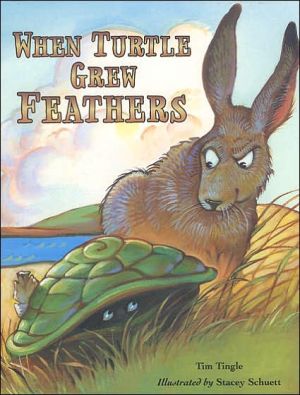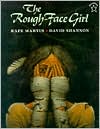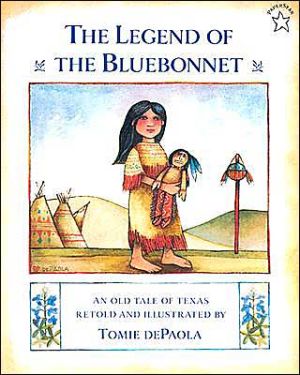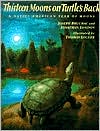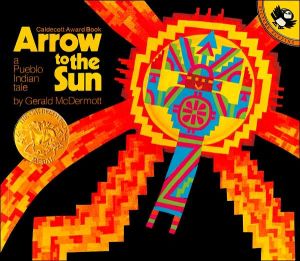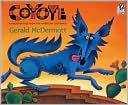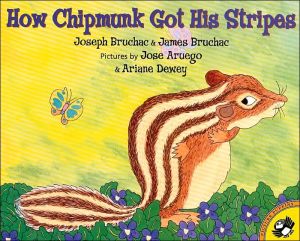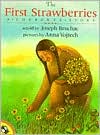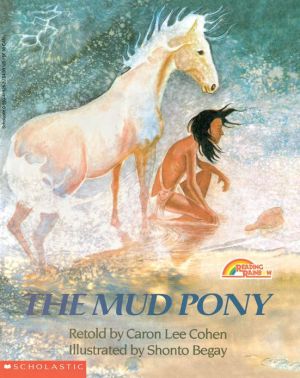When Turtle Grew Feathers: A Tale from the Choctaw Nation
Maybe you think you know the story of the big race between Rabbit and Turtle. Think again! In this story from the Choctaw People, Tim Tingle shows that it was not being slow and steady that won Turtle the big race, it was those feathers!!!
Search in google:
Maybe you think you know the story of the big race between Rabbit and Turtle. Think again! In this story from the Choctaw People, Tim Tingle shows that it was not being slow and steady that won Turtle the big race, it was those feathers!!!Children's LiteratureThis Choctaw version of Aesop's fable, The Tortoise and the Hare, is retold with equal wisdom but more humor. It points out the common tendency to blame others for offenses we commit, but also models reconciliation and generosity, showing that cooperation solves problems. Without preachiness, readers are reminded that learning is the point of experience, but in this case the lesson is not only that the weak may prevail but also that it helps to have powerful friends. The storyteller's heartening conversational voice brings the vocabulary down to earth, substituting turtle and rabbit for tortoise and hare. Author and illustrator play with size images to increase the contrast between big and small, fast and slow. The illustrations so enlarge the animals that we perceive the landscape from the turtle's perspective—very near to the ground. Action scenes explode with color and movement, some of them bursting the bounds of their tame, tessellated frames, contrasting the turtle's slow, low lifestyle with the explosive events around him. The majesty of wings astounds both the ground-bound animals, rabbit and turtle, and the reader, and fills a double spread with their mythic power. The big astounded eyes of the surprised rabbit are compared to "Little Bitty Turtle shells," and thus embarrass him more. Irony adds humor when the defeated rabbit hops away like a bunny, but making "hip-hoppity, hip-hoppity" sound like a poor and somehow very slow exit line.
\ Children's Literature\ - Christina M. Desai\ This Choctaw version of Aesop's fable, The Tortoise and the Hare, is retold with equal wisdom but more humor. It points out the common tendency to blame others for offenses we commit, but also models reconciliation and generosity, showing that cooperation solves problems. Without preachiness, readers are reminded that learning is the point of experience, but in this case the lesson is not only that the weak may prevail but also that it helps to have powerful friends. The storyteller's heartening conversational voice brings the vocabulary down to earth, substituting turtle and rabbit for tortoise and hare. Author and illustrator play with size images to increase the contrast between big and small, fast and slow. The illustrations so enlarge the animals that we perceive the landscape from the turtle's perspective—very near to the ground. Action scenes explode with color and movement, some of them bursting the bounds of their tame, tessellated frames, contrasting the turtle's slow, low lifestyle with the explosive events around him. The majesty of wings astounds both the ground-bound animals, rabbit and turtle, and the reader, and fills a double spread with their mythic power. The big astounded eyes of the surprised rabbit are compared to "Little Bitty Turtle shells," and thus embarrass him more. Irony adds humor when the defeated rabbit hops away like a bunny, but making "hip-hoppity, hip-hoppity" sound like a poor and somehow very slow exit line.\ \ \ \ \ School Library JournalPreS - Gr 2 - Variations of the race between the tortoise and the hare crop up regularly, but this version, retold as a trickster tale, stands out for its humor and expressive illustrations. Here, the rabbit only thinks he raced a turtle. In fact, it was a flying turkey wearing Turtle's shell. Also a porquoi tale, the story begins when Turkey steps on Turtle's back, breaking his shell into pieces. Turkey recruits an army of ants to mend it with cornsilk, and the shell transforms from a swirl into its familiar geometric pattern. In appreciation, Turtle allows Turkey to try it on just as Rabbit appears, itching for a race. The rest is history, though few have heard the historic event retold quite like this. The prose alternates between rhyming and nonrhyming text and for the most part it bounces along without stumbling. A few lines feel manipulated to create the rhyme, such as "'What is it?' asked Turtle, his eyes opened wide./'Here comes Rabbit,' said the Little Bitty Five./'Rabbit wants to race, and he won't be denied.'" Bright cartoon illustrations capture the tale's humor and energy. Turkey explodes off the page as he emerges from Turtle's shell, ready to run. The animals' various emotions are well rendered, including Turtle's chagrin, Rabbit's aggression and later humiliation, and the budding friendship between Turtle and Turkey. Use this book as a variation to a common folktale, an introduction to Native American lore, or as a fine read-aloud all on its own.-Suzanne Myers Harold, Multnomah County Library System, Portland, OR\ Copyright 2007 Reed Business Information\ \ \ Kirkus ReviewsIn this amusing variation on the traditional tortoise and the hare tale, Turkey tries on Turtle's shell after accidentally cracking and then repairing it. Then, " ‘Here comes Rabbit,' said the Little Bitty Five. / ‘Rabbit wants to race, and he won't be denied.' " Turkey, hidden in Turtle's shell, accepts the challenge of the bullying Rabbit, who is mean-looking and larger-than-life. The look on Rabbit's face when Turkey pushes out his long neck, then his long skinny legs, and finally his wings, is not to be missed. Turkey circles the lake before Rabbit even gets started, and puts Rabbit to shame. The story concludes, "Rabbit never challenged Turtle again. That's why you never see them racing today." The bold and colorful illustrations are a good match for this lively telling that, with Rabbit's breezy rap-like dialogue, is a joy to read aloud. Based on a traditional Choctaw story, this telling wins the race. Includes notes on sources. (Picture book/folktale. 5-8)\ \
